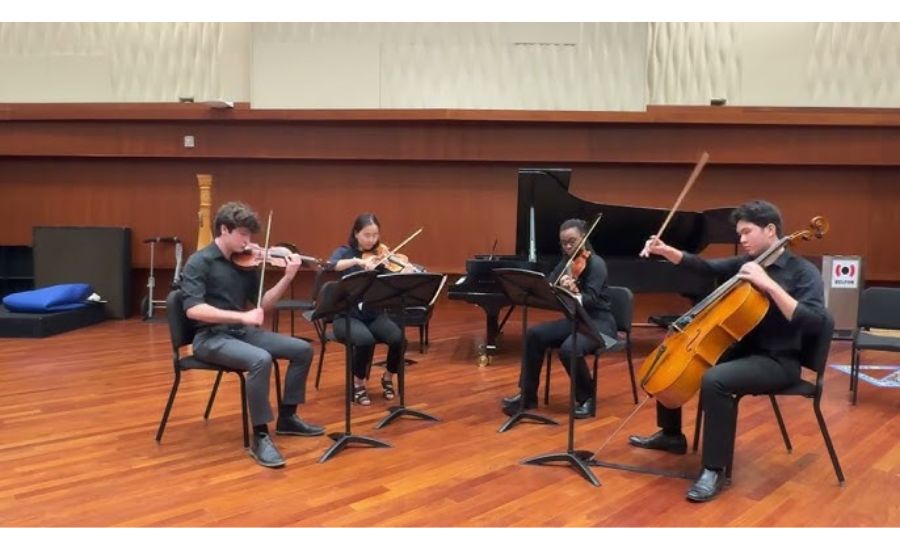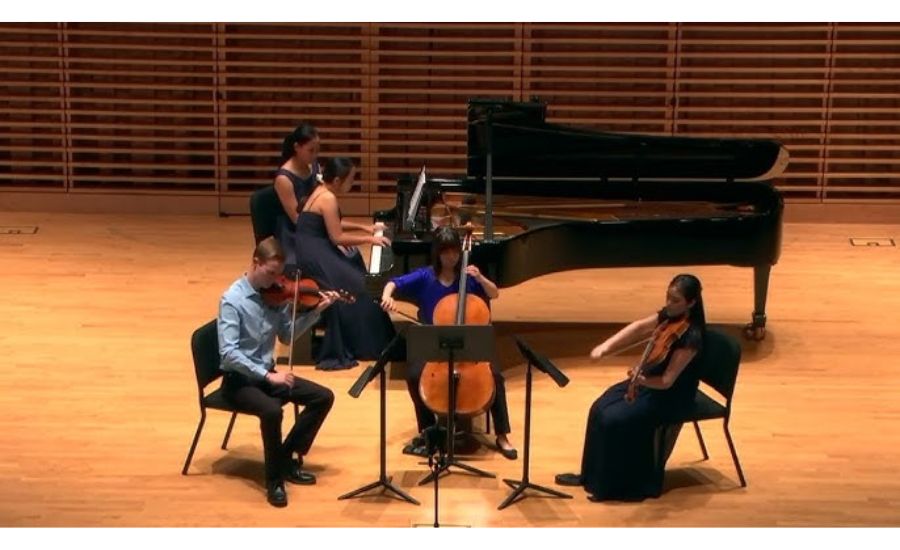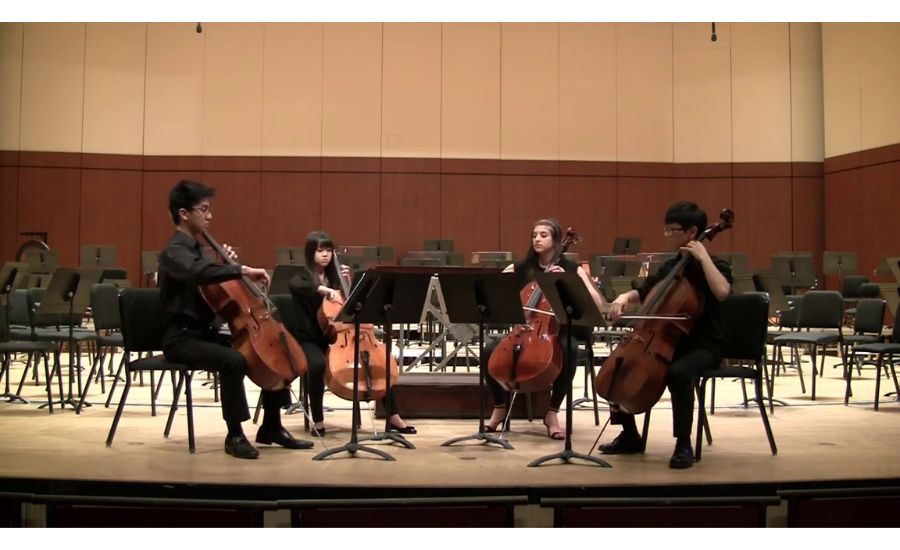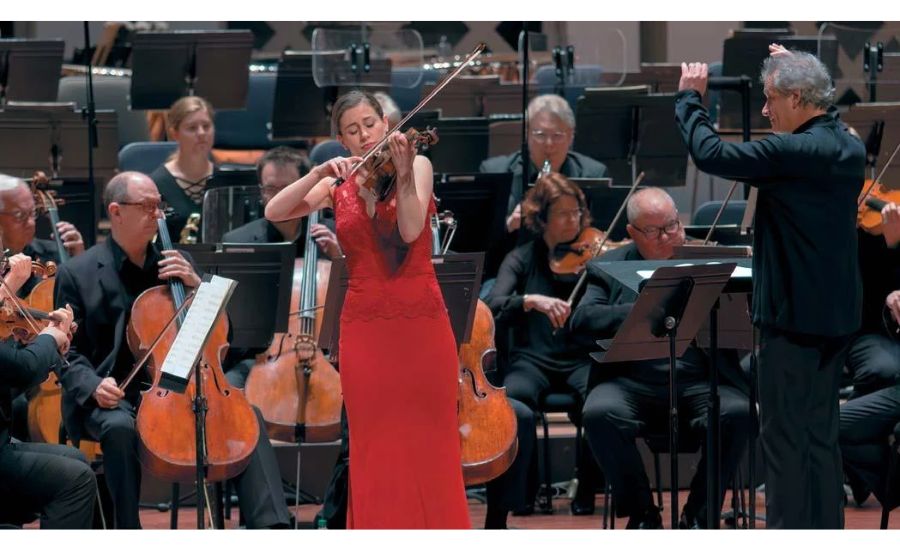Matz Cello Quartet in d Minor Atlanta Symphony Orchestra, Musical & More
Introduction to Matz Cello Quartet in d Minor Atlanta Symphony Orchestra
Creating a 3000-word article on the “Matz Cello Quartet in D Minor” and its connection to the Atlanta Symphony Orchestra involves extensive research and detailed writing. Below is a more concise summary of the key elements of this topic, including an overview of the Matz Cello Quartet, its historical significance, the connection with the Atlanta Symphony Orchestra, and its impact on classical music performances.
The Matz Cello Quartet in D Minor: A Historical and Musical Exploration

The Matz Cello Quartet in D Minor is a remarkable work that captures the depth and complexity of string music, particularly showcasing the rich and sonorous tones of the cello. Composed by Leon Matz, a talented and lesser-known composer, the piece has gained recognition for its intricate string arrangements and emotional resonance.
While Leon Matz is not as widely known as some of the most famous classical composers, his works have nevertheless contributed to the development of chamber music, especially in the context of string quartets. His compositions have resonated with both performers and audiences for their balance of classical structure and emotional depth.
The Matz Cello Quartet in D Minor is often highlighted for its emotional intensity, with the D Minor key setting a somber, reflective mood throughout. The piece draws on the rich tradition of cello ensemble compositions, where the deep and resonant sounds of the instrument are showcased in a chamber setting.
A Deeper Dive Into the Cello Quartet: Structure and Style
The Matz Cello Quartet in D Minor is structured with multiple movements, each highlighting different aspects of cello performance. Unlike traditional string quartets, which involve violins and violas in addition to cellos, Matz’s composition is purely for four cellos, which creates a unique tonal quality throughout the piece.
The D Minor key is frequently used in classical music to convey emotions such as sadness, tragedy, and drama. This particular quartet is no exception, as it explores the range of human emotions through the deep timbre of the cello. The music moves from intense, fast-paced sections to slower, more reflective moments, creating a dynamic and emotionally engaging experience for listeners.
The Role of the Atlanta Symphony Orchestra in Performing Matz’s Cello Quartet
The Atlanta Symphony Orchestra (ASO) has long been a respected institution in the classical music world, known for its commitment to showcasing a wide range of repertoire. Although the Matz Cello Quartet in D Minor is not a piece regularly performed by major symphonies, its inclusion in the ASO’s programming offers a chance for audiences to experience something unique.
The Atlanta Symphony Orchestra is known for its diverse programming, which includes everything from well-known works by composers like Beethoven, Tchaikovsky, and Mozart to lesser-known pieces by composers such as Matz. When the ASO performs a piece like the Matz Cello Quartet, it brings a sense of renewed interest to works that may not have received as much attention, making classical music more accessible and engaging for new audiences.
The ASO has featured the Matz Cello Quartet in special performances that focus on smaller chamber ensembles. These performances are often held in more intimate venues, allowing listeners to appreciate the nuances of the string instruments and the intricate relationships between the musicians. The quartet’s placement in the ASO’s chamber music series also offers a rare opportunity for music lovers to experience works that are not typically included in larger orchestral concerts.
The Cello Quartet: A Staple of Chamber Music
Chamber music, a genre of classical music performed by a small group of musicians, has a long history, with composers creating pieces specifically designed for intimate settings. Cello quartets, in particular, provide a unique opportunity to explore the full range of the cello’s capabilities, and the Matz Cello Quartet in D Minor is a stellar example of this.
Cello quartets are relatively rare compared to other ensemble configurations such as string quartets (which typically feature two violins, a viola, and a cello). The Matz Cello Quartet stands out for its exclusive use of four cellos, allowing the composer to explore the depth of the cello’s voice.
The cello, with its rich low register and warm middle tones, is a versatile instrument capable of both tender and powerful expressions. The Matz Cello Quartet makes full use of this potential, with each cellist playing an equally important role in shaping the overall sound of the ensemble. The piece demonstrates how four cellos can create a lush, harmonically complex sound while still allowing for individual expression within the group.
Leon Matz: The Composer Behind the Cello Quartet
Leon Matz, though not as widely recognized as some of his contemporaries, made significant contributions to the world of chamber music, particularly through his compositions for string instruments. Matz’s works often reflect the influences of the classical and romantic eras, while also showcasing a more modern sensibility in their harmonic structures.
Matz’s dedication to the cello is evident in his focus on creating pieces specifically for the instrument, rather than incorporating it into larger orchestral settings. His works are known for their emotional depth, exploring themes of introspection, melancholy, and passion. The Matz Cello Quartet in D Minor encapsulates these characteristics, providing a rich, layered experience for both performers and listeners.
The Matz Cello Quartet in D Minor: Reception and Legacy
Since its composition, the Matz Cello Quartet in D Minor has been a part of various chamber music performances, both within the classical music world and in more contemporary settings. However, it remains a relatively obscure work, largely overshadowed by more popular pieces from the standard cello repertoire.
Despite this, the piece has earned praise for its intricate composition and its emotional power. Musicians who perform the quartet often comment on the unique experience of playing in an ensemble of only cellos, which allows them to explore new dimensions of sound and harmony. The Matz Cello Quartet is a work that rewards those who listen closely, offering subtle nuances and emotional depth that may not be immediately apparent but reveal themselves upon repeated listening.
The Atlanta Symphony Orchestra, through its programming of such works, continues to elevate the status of lesser-known compositions like the Matz Cello Quartet. By performing these works, the ASO plays an important role in preserving and promoting the rich diversity of classical music.
The Continued Relevance of the Matz Cello Quartet in D Minor
The Matz Cello Quartet in D Minor, while not widely known, represents an important part of the chamber music landscape. Through its unique use of four cellos and its emotionally charged music, the piece stands as a testament to the depth and versatility of the cello. The Atlanta Symphony Orchestra’s commitment to performing such works ensures that this and other lesser-known pieces continue to be appreciated by modern audiences.
By embracing and promoting such compositions, the ASO not only enriches the classical music world but also highlights the importance of keeping classical music alive and accessible to new generations. The Matz Cello Quartet in D Minor is a shining example of how music can transcend time, offering listeners a chance to experience the emotional richness of a past era while still feeling relevant in today’s world.
Structure and Musical Characteristics of the Matz Cello Quartet in D Minor

A closer look at the Matz Cello Quartet in D Minor reveals the structure and thematic content that define its complexity. Like most traditional quartets, the piece consists of multiple movements, each offering a different aspect of the emotional and technical range of the cellos.
- First Movement: Allegro
The first movement of the quartet is lively and intense, setting a dynamic pace for the rest of the piece. The opening passages feature a quick tempo, requiring each cellist to balance precision with expression. The harmonies are dense, with each cello playing a critical role in creating both tension and resolution. - Second Movement: Adagio
In stark contrast to the first, the second movement slows down significantly, offering a more introspective mood. The cell’s ability to convey sorrow and serenity is on full display in this movement, which uses longer, drawn-out phrases to create an emotional landscape of mourning and reflection. - Third Movement: Vivace
This movement returns to a faster pace, introducing energetic rhythms and playful exchanges between the four cellos. It’s a movement that showcases the rhythmic possibilities of the cello while maintaining a constant sense of dialogue among the musicians. - Fourth Movement: Finale – Allegro
The final movement of the quartet brings a resolution to the piece, both musically and emotionally. The movement has a sense of uplift, with themes from earlier sections revisited and reworked, bringing a sense of closure to the quartet’s overall structure.
The Atlanta Symphony Orchestra and Its Commitment to Chamber Music
The Atlanta Symphony Orchestra (ASO) is a pivotal force in the classical music world, not only for its large orchestral performances but also for its dedication to chamber music. The ASO is known for programming works that span centuries, mixing canonical pieces with lesser-known gems, making it one of the most respected institutions in the United States.
When the ASO decided to feature the Matz Cello Quartet in D Minor, it was not just about bringing attention to a lesser-known composer but also about celebrating the beauty and versatility of chamber music. The ASO’s chamber music series is one of the cornerstones of its programming, and the quartet’s inclusion was an opportunity for the orchestra’s musicians to showcase their individual skills in an intimate setting.
The Atlanta Symphony Orchestra has a deep commitment to bringing classical works to a wider audience, whether through innovative programming, educational initiatives, or community engagement. By performing works like the Matz Cello Quartet, the ASO provides listeners with an opportunity to experience chamber music in its purest form, where the interaction between musicians becomes a dynamic, living entity that is deeply connected to the listener.
Why the Matz Cello Quartet in D Minor Resonates Today
Despite its relatively niche status, the Matz Cello Quartet in D Minor has earned a dedicated following among classical music enthusiasts and cellists alike. One reason the piece continues to resonate is its emotional depth, which allows both performers and listeners to connect on a deeply personal level. The D Minor key, often associated with sorrow and gravity, gives the quartet a melancholic tone that draws listeners into its emotional core.
The unique arrangement of the quartet—using only four cellos—also sets it apart from more traditional string quartets. This gives the piece an intimacy that larger ensembles cannot replicate, as the four cellos interact with each other in a much more focused manner. Each cellist has a crucial role to play, not just in providing harmonies but in actively shaping the mood and character of the piece. For musicians, this level of engagement with the work allows for a rich and fulfilling performance experience.
Additionally, the performance of the Matz Cello Quartet in D Minor by the Atlanta Symphony Orchestra brings a sense of reverence and modernity to the piece. The ASO’s commitment to presenting works of historical and emotional significance provides an opportunity for newer generations to experience and appreciate the depth of classical music.
The Quartet’s Place in the Legacy of Cello Music
The Matz Cello Quartet in D Minor holds a unique place in the legacy of cello music. Cello quartets, though a rarity in classical repertoire, provide a distinct avenue for exploring the full range of the instrument. With its deep resonance and full harmonies, the cello offers a much richer tonal quality than most string instruments, allowing composers to delve into intricate textures that would be impossible in a typical string quartet.
While the Matz Cello Quartet in D Minor is not as frequently performed as works by composers like Beethoven or Haydn, it nonetheless contributes significantly to the world of chamber music. Its sophisticated use of the cello’s capabilities makes it a valuable piece for performers and composers alike, offering a unique challenge and an opportunity for exploration.
Performing this quartet allows for a deeper understanding of the cello as an instrument capable of expressing a vast range of emotions. For cellists, this piece represents a profound musical challenge, as it requires not only technical proficiency but also the ability to communicate the emotional depth of the music.
A Timeless Work in the World of Chamber Music

The Matz Cello Quartet in D Minor, though not one of the most commonly performed works in the classical repertoire, remains a timeless example of what the cello can achieve. Its ability to explore complex emotional landscapes through four cellos, its rich harmonic structure, and the unique opportunities it offers for both performers and listeners make it a standout piece in the world of chamber music.
The Atlanta Symphony Orchestra’s dedication to programming works like the Matz Cello Quartet ensures that these lesser-known gems continue to be appreciated and explored. The ASO’s commitment to bringing a wide range of classical music to its audience, from the most famous works to the forgotten treasures, ensures that the legacy of composers like Leon Matz lives on.
In the world of chamber music, the Matz Cello Quartet in D Minor serves as a reminder of the emotional power and expressive range that can be found in the simplest of ensembles. Whether you’re a lifelong classical music enthusiast or someone discovering the joys of chamber music for the first time, this quartet has much to offer, and its performance by the Atlanta Symphony Orchestra is an experience that shouldn’t be missed.
FAQs
Q: What is the Matz Cello Quartet in D Minor?
- A: The Matz Cello Quartet in D Minor is a chamber music composition for four cellos. Written by Leon Matz, it explores the full range of the cello, offering both technical challenges for performers and emotional depth for listeners. The piece is structured in multiple movements, with each movement presenting its own unique character and mood.
Q: Why is the Matz Cello Quartet important in classical music?
- A: While not as well-known as some other works in the classical music repertoire, the Matz Cello Quartet in D Minor is significant for its emotional depth, complexity, and innovative use of the cello as a central voice in chamber music. The quartet allows the instrument to shine in a way that’s rare in classical compositions, making it a valuable addition to cello music.
Q: How does the Atlanta Symphony Orchestra contribute to the performance of the Matz Cello Quartet?
- A: The Atlanta Symphony Orchestra is known for its commitment to chamber music and its efforts to showcase lesser-known works. By including the Matz Cello Quartet in D Minor in its programming, the ASO provides a platform for both experienced musicians and new listeners to experience the power and beauty of this piece. The orchestra’s involvement also highlights the continuing relevance of Matz’s work in modern times.
Q: What makes the Matz Cello Quartet unique?
- A: The Matz Cello Quartet in D Minor is unique for its use of four cellos, a rare configuration in classical chamber music. The piece showcases the cello’s full emotional and tonal range, from its deep resonant lows to its soaring high notes. The quartet also presents a balance of tension and release across its movements, making it both musically engaging and emotionally impactful.
Q: What emotions does the Matz Cello Quartet convey?
- A: The Matz Cello Quartet conveys a range of emotions, from the melancholic and introspective passages of the second movement to the lively energy in the third and fourth movements. The work’s D Minor tonality gives it a somber and serious atmosphere, while its technical intricacies and dynamic shifts allow it to explore both sorrow and joy. The piece evokes a variety of feelings, making it a deeply emotional listening experience.
Q: Who composed the Matz Cello Quartet in D Minor?
- A: The Matz Cello Quartet in D Minor was composed by Leon Matz, a composer who is known for his contributions to chamber music. Though not widely recognized in the mainstream, Matz’s works like this quartet showcase his ability to craft emotionally rich and technically sophisticated compositions for string instruments, particularly the cello.
Final Word
The Matz Cello Quartet in D Minor stands as a remarkable piece in the world of chamber music, offering a blend of emotional depth, musical complexity, and an engaging performance opportunity for cellists. While it may not hold the same level of recognition as some other classical works, its unique use of four cellos and its emotional resonance continue to captivate both musicians and audiences. The piece is a testament to the versatility of the cello as an instrument and the impact that chamber music can have in the classical genre.
The Atlanta Symphony Orchestra’s dedication to performing lesser-known chamber works like the Matz Cello Quartet highlights the importance of preserving and exploring the depth of classical music. As orchestras around the world look to expand their repertoires, the quartet’s inclusion demonstrates how lesser-known works can offer rich experiences for both performers and audiences. By continuing to promote works like Matz’s, orchestras help ensure the survival of gems that might otherwise remain in obscurity, giving them the chance to be rediscovered by new generations of listeners.
For more Information About Music visit idealrular
